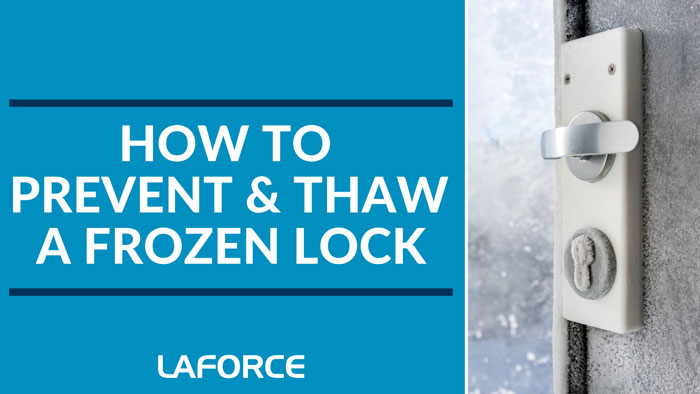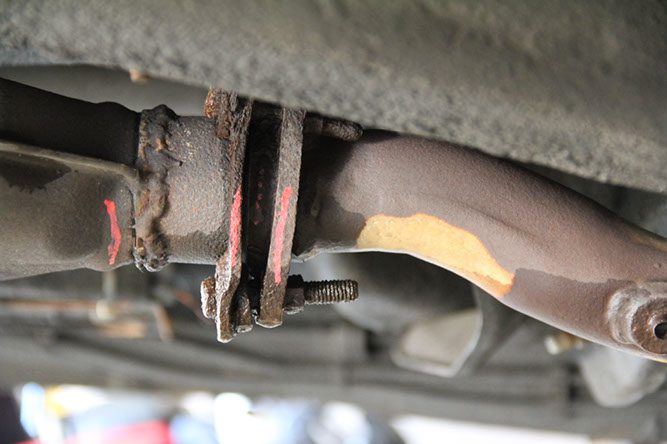How to Thaw a Frozen Lock
To thaw a frozen lock, use a hairdryer on low heat or de-icer spray. Thawing a frozen lock is a common issue during the colder months and can be frustrating if not dealt with properly.
Whether you are trying to unlock your car or door at home, it is essential to know the right method to thaw a frozen lock effectively. In this guide, we will explore simple and effective techniques to safely thaw a frozen lock using household items like a hairdryer or de-icer spray.
By following these steps, you can easily regain access without causing any damage to your lock. Let’s delve into the quick and practical solutions for thawing a frozen lock.

Credit: phslock.com
Why Frozen Locks Happen
Frozen locks are often the result of moisture accumulation within the locking mechanism. When humidity or water gets into the lock, it can freeze due to cold temperatures, causing the lock to become stuck.
During periods of extreme cold temperatures, any moisture in the lock can quickly freeze, leading to difficulty in unlocking doors. When temperatures drop, any residual moisture in the locking mechanism can solidify and prevent the key from turning.
Preventing Frozen Locks
Keeping your locks from freezing can save you time and frustration during the colder months. Here are a couple of simple methods you can use to prevent your lock from freezing:
Use A Lock De-icer
A lock de-icer is a handy tool that can quickly thaw a frozen lock. Keep one in your car or at home for easy access when needed.
Apply Graphite Lubricant
Graphite lubricant can help prevent your lock from freezing in the first place. Apply it to the keyhole regularly for optimal results.
Thawing A Frozen Lock
Do you need to thaw a frozen lock? Follow these easy steps to quickly and safely thaw a frozen lock.
Following these simple methods is crucial for thawing a frozen lock and gaining access quickly:Use A Hairdryer
Using a hairdryer to gently warm the lock can help melt the ice within.Apply A Lock De-icer
Applying a lock de-icer directly into the keyhole can quickly dissolve the ice.
Credit: laforceinc.com
Alternative Methods
When dealing with a frozen lock, traditional methods like using de-icing sprays or a hairdryer may not always be available. In this case, alternative methods can prove to be a lifesaver. Let’s explore some alternative techniques to thaw a frozen lock.
Use A Heated Key
One innovative way to thaw a frozen lock is by using a heated key. This method involves heating up the key before inserting it into the lock. By doing so, the heat can effectively melt the ice obstructing the lock mechanism.
Heat The Key With A Lighter
If you don’t have access to a heated key, another alternative is to heat the key using a lighter. By carefully applying heat to the key, it can be warmed enough to help thaw the frozen lock when inserted. Be sure to exercise caution and avoid overheating the key, as this could cause damage to the key or the lock itself.
When To Call A Professional
Thawing a frozen lock can be a frustrating experience, especially when you’re in a rush to get somewhere. However, it’s crucial to know when your best efforts might not be enough. In some cases, calling a professional locksmith is the wisest choice to avoid further damage or inconvenience. Let’s take a closer look at two scenarios when it’s time to seek expert help.
Persistent Freezing
If your lock keeps freezing up even after you’ve successfully thawed it multiple times, it may be a sign of a broader issue. The repeated freezing could indicate an underlying problem with the lock mechanism or the door itself. While temporary solutions like lubricating the lock with graphite powder or de-icer spray might provide short-term relief, they won’t address the root cause. In this situation, it’s best to seek the assistance of a professional locksmith who can identify the root cause and fix it.
Damaged Lock
Attempting to thaw a frozen lock using improper methods or excessive force can result in damage to the lock mechanism. If you notice any visible signs of damage, such as bent or broken components, it’s crucial to call a professional locksmith immediately. A damaged lock is not only a security risk but can also make it challenging to open and close the door smoothly. By relying on the expertise of a professional, you can ensure that the lock is repaired or replaced correctly, minimizing any further complications.
In conclusion, while it can be tempting to tackle a frozen lock on your own, knowing when to seek professional help is essential. Persistent freezing and a damaged lock are clear indications that it’s time to involve a locksmith. Remember to always prioritize safety, security, and the overall functionality of your locks by relying on a trained professional.

Credit: m.youtube.com
Frequently Asked Questions Of How To Thaw A Frozen Lock
How Do You Defrost A Frozen Lock?
To defrost a frozen lock, use a de-icing solution, such as a commercial de-icer or rubbing alcohol. Apply the solution directly to the lock and wait a few minutes to allow it to melt the ice. You can also use a hairdryer or warm key to thaw the ice.
Will Rubbing Alcohol Unfreeze A Lock?
Rubbing alcohol can unfreeze a lock by dissolving ice inside, making it easier to open.
Will Wd-40 Unfreeze A Frozen Lock?
Yes, WD-40 can unfreeze a frozen lock by lubricating it, making it easier to open.
Will Hot Water Unfreeze A Lock?
Yes, hot water can unfreeze a lock by melting the ice and allowing the mechanism to turn. However, it’s important to use caution and avoid using boiling water, which can cause damage. Warm water is the safest option for unfreezing a lock.
Why Does A Lock Freeze In Winter?
When the temperature drops below freezing, moisture in the lock mechanism can freeze, causing the lock to become stuck.
What Are The Common Causes Of Frozen Locks?
Exposure to cold temperatures, moisture accumulation, and inadequate lubrication can all contribute to frozen locks.
Can I Use Hot Water To Thaw A Frozen Lock?
Using hot water can cause the lock to expand too quickly, potentially damaging it. It is recommended to use a de-icing spray or a lock de-icer instead.
Conclusion
Thawing a frozen lock doesn’t have to be a frustrating experience. By using the right tools and techniques, you can quickly and easily regain access to your car, home, or office. Remember to be patient and gentle when dealing with frozen locks to avoid damaging them.
With these tips, you can confidently handle any frozen lock situation that comes your way.


